TRANSGRESSION/CANTOSPHERE – The Importance of Language and Culture in Identity (Review by Ellie Cho)
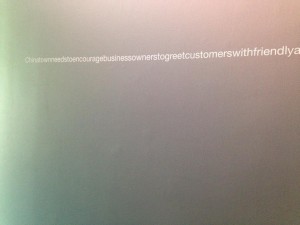
On a quiet street in Chinatown, in a small space called Centre A Gallery, the TRANSGRESSION/CANTOSPHERE exhibit can be found. Hong Kong Exile (HKX), together with Zoe Lam and Howie Tsui, have created a space for reflection and celebration: the reflection of Chinatown as an urban space that is declining and becoming more multicultural; the celebration of the Cantonese language and the culture of Hong Kong. The reflection is of Chinatown becoming more and more multicultural because of the new condos that target the ‘white creative class’, as well as the emergence of more Euro-American galleries in the area. In terms of the celebration of the Cantonese language and culture, Cantonese is a language that is not as widely recognized as Mandarin is. In Hong Kong and Guangdong, they created a regulation to standardize the language to Mandarin in the public sector. In Vancouver, Chinatown has a great population of Cantonese speakers. However, like the situation across the seas, Chinatown use Mandarin as the standardized language.
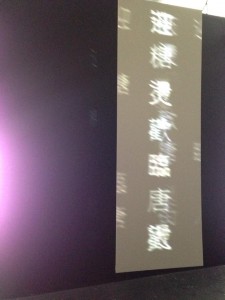
The exhibit space is shaped as a square. The three walls around the room represent the reflection part of the exhibit. There is a line of words going across all of the three walls. These words seem to make sentences but they do not include spaces or punctuations. The middle wall has a small wooden shelf with items on it. The wall opposite to this middle wall is partially covered by a scroll-like screen. This is the celebration part of the exhibit. After a period of time, the lights dim into darkness and there are fuzzy characters moving quickly in disarrangement. This is accompanied by sound of people mumbling and page-flipping noises. Then, one by one, characters will emerge on the screen from top to bottom. A robot-like female voice reads out the phrase. Then one of the characters is highlighted, read, changed to a different character, and then read again. This happens a few times with the same phrase. The characters that are highlighted and changed have the same sound with same or different tone; but they all have different meanings. This process goes on with other phrases and characters as well.
For example:
希望在於人民
The hope is in the people
希望在於人蚊
The hope is in the human mosquitoes
希望在於人吻
The hope is in the human kiss
希望在於人問
The hope is in the questions that people ask
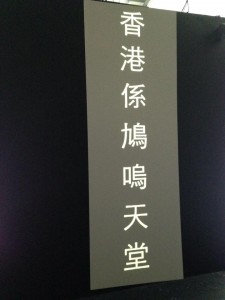
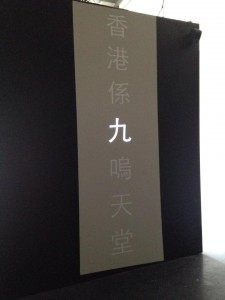
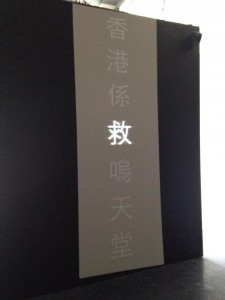
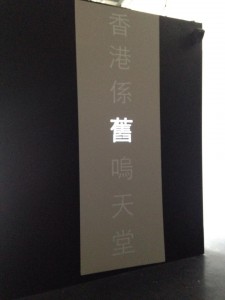
Even though this exhibition is within a small confined space, it does have a great impact. When the lights go dark and the video is played, it is hard not to watch what is happening on the screen. The pamphlet, which the exhibit provides, offers good explanation because it is hard to get the background history from the exhibit itself. There is also a pamphlet that has the translations of the puns in the video. By putting the pieces of history with the exhibit, the visitors are able to see how culture and language are in stake in the Cantonese community in Vancouver Chinatown and overseas. And by standardizing the language, the identities of the Cantonese-speakers are becoming lost. Thus, the exhibit uses the idea of language in order to celebrate the identity and culture of Cantonese-speakers. With many different tones in the Cantonese language, puns are a great way to appreciate the language. Thus, the creators of the exhibit did a great job emphasizing the pun and the importance of language. On the other hand, it feels as though the people who have been exposed to the Chinese language, prior to attending the exhibit, would be able to understand the exhibit better. Since the video of the puns is the centre piece of the exhibit, knowledge of how Chinese language works will definitely help with understanding the importance and the uniqueness of the Cantonese language. Other than the video, the exhibit takes less than five minutes to get through. So, if anyone is interested in linguistics, languages, or the history of Cantonese speakers, this is the place to stop by.
“Current Exhibition.” Tyler Russell. Centre A. Centre A, 10 March 2015. Web. 13 March 2015. <http://centrea.org/exhibitions/current>
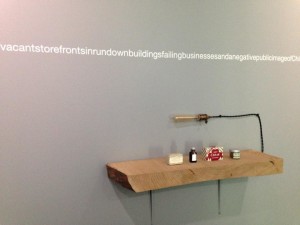
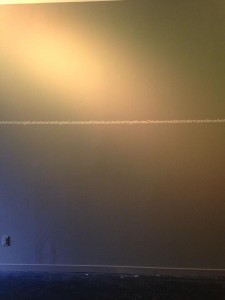
Hi Ellie.
Thanks so much for stopping by the exhibit and writing this thorough reflection/response. Maybe we’ll see you at the closing night panel/dialogue session?
All the best to you!
~Natalie